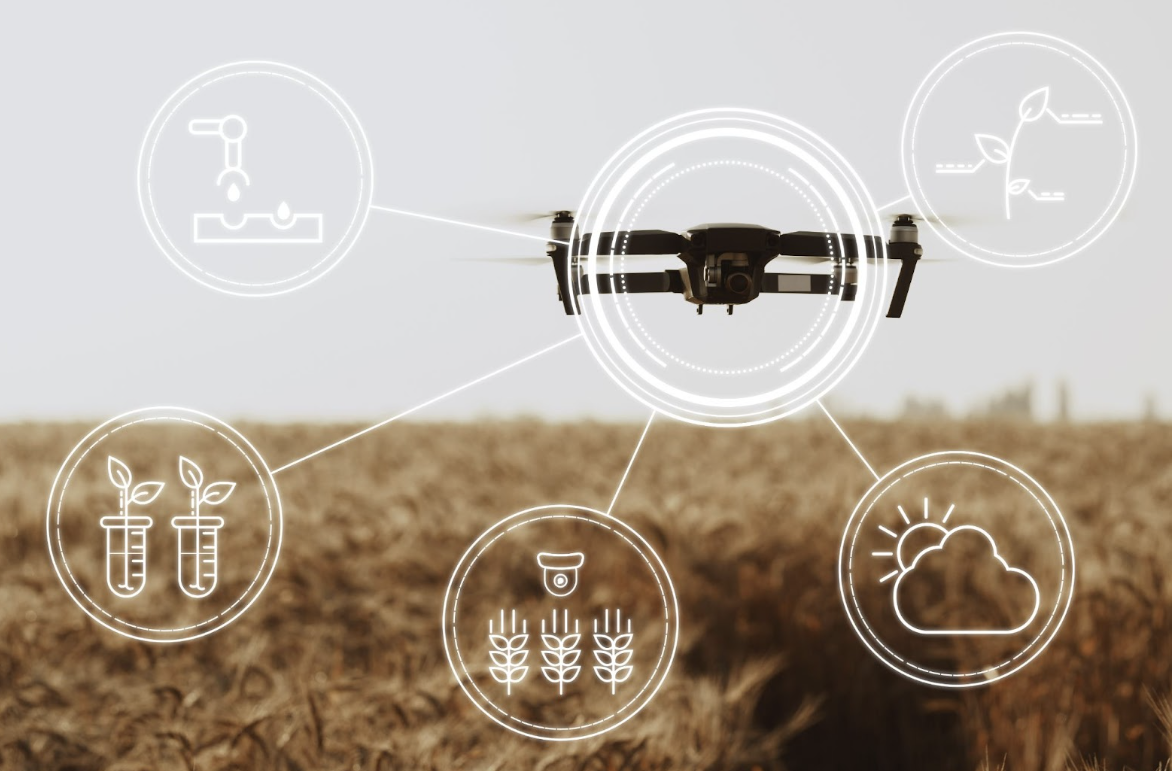Autonomous Agriculture: What It Means for Today’s Farmer

As the global population continues to rise, modern agronomy faces increasing pressures to enhance productivity while maintaining sustainability. Autonomous agriculture has emerged as a promising solution, integrating robotics, artificial intelligence (AI), and advanced sensor technologies to transform traditional farming into a more efficient, precise, and sustainable practice. By automating routine tasks and optimizing farm management, autonomous farming reshapes the roles of farmers, enabling them to focus more on strategic decision-making and resource management.
Historically, farming was characterized by manual labor and intuitive decision-making, often leading to inefficiencies. Today, autonomous agriculture leverages technology to monitor and manage crops precisely, drastically reducing waste and boosting productivity. Moreover, these technologies also contribute significantly to food security by providing more consistent and predictable harvests, which is vital in meeting global food demands. While this shift represents a significant technological advancement, it also raises important questions about its implications for farmers, rural communities, and the broader agricultural industry. Let’s explore the advantages of autonomous farming for modern farmers.
Farmer Benefits from Autonomous Agronomy
Adopting smart farming technologies presents numerous advantages for today’s farmer. The benefits of crop health monitoring using remote sensing are particularly notable. Technologies like satellite crop monitoring and remote agriculture monitoring provide comprehensive insights into plant health and growth patterns, enabling farmers to proactively manage issues before they escalate into major problems, thereby ensuring stable crop yields and quality.
Another significant advantage is improved efficiency. Autonomous equipment such as driverless tractors, automated sprayers, and harvesters can operate continuously without human fatigue, significantly increasing operational hours and productivity. This translates to faster planting, harvesting, and overall farm management. Additionally, these automated systems can adapt dynamically to changing environmental conditions, further enhancing productivity and resilience against climate variability.
Moreover, autonomous agriculture enables precise farm management through advanced farm monitoring systems and crop monitoring software. Farmers can leverage detailed data analytics provided by these technologies to make informed decisions about planting schedules, irrigation, fertilization, and pest management. The enhanced precision reduces input waste, thus cutting costs and boosting farm profitability.
For instance, John Deere’s autonomous tractor series is already revolutionizing farm operations in large-scale farms worldwide, significantly improving labor productivity and reducing operational costs. Similarly, Trimble Agriculture’s solutions integrate precise GPS technologies with automated equipment, improving field-level accuracy and decision-making capabilities.
Another critical advantage is environmental sustainability. By optimizing input application, autonomous systems significantly reduce the overuse of fertilizers and pesticides, minimizing environmental impact and promoting sustainable agricultural practices. Such sustainable strategies not only enhance soil health but also ensure compliance with environmental regulations and consumer demands for sustainable produce. Farmers adopting these practices are increasingly recognized as industry leaders in environmental stewardship, bolstering their market competitiveness.
What Challenges Might Farmers Actually Face?
Despite its numerous benefits, transitioning to autonomous agriculture poses several significant challenges. One primary obstacle is the substantial initial investment required for autonomous equipment and related technologies. Smaller farms might find it challenging to justify or afford these upfront costs, creating a potential divide in the agricultural sector.
Additionally, technological integration can present practical challenges. Autonomous systems require robust infrastructure and stable internet connectivity for optimal operation. Many rural agricultural regions lack the necessary digital infrastructure, which could limit the widespread adoption of these advanced technologies. Addressing this digital divide requires concerted efforts and investments from governments, industry stakeholders, and technology providers.
Farmers may also face challenges related to data security and management. Autonomous agricultural systems generate vast amounts of sensitive data related to farm operations and crop health. Protecting this data from cyber threats and ensuring privacy compliance can be both complex and costly. Additionally, the ownership and ethical use of farm data can become contentious, requiring clear policies and robust legal frameworks.
Furthermore, there is the issue of technological literacy and training. The successful implementation of autonomous technologies demands significant skill and knowledge. Farmers accustomed to traditional methods might resist this change, or struggle to adapt without comprehensive support and training programs. Dedicated education initiatives and accessible training modules will be essential to bridge this knowledge gap effectively.
Autonomous Agriculture Technologies
Several key technologies underpin smart farming, each playing a pivotal role in modernizing farm operations:
- Autonomous Vehicles
Driverless tractors, harvesters, drones, and robots automate routine tasks such as seeding, fertilizing, and harvesting. For example, AGROBOT’s autonomous strawberry pickers and John Deere’s driverless tractors highlight how robotics dramatically increases operational efficiency. Emerging autonomous drones also provide quick and detailed aerial assessments, enhancing monitoring accuracy and operational responsiveness.
- Precision GPS Systems
High-accuracy GPS and geospatial technology enable precise field navigation and operational accuracy. This technology ensures optimal seed placement, pesticide application, and efficient harvesting, significantly reducing resource wastage. Integration with cloud platforms further allows real-time adjustments and predictive analytics to boost productivity.
- AI and Machine Learning
AI-driven algorithms analyze vast datasets from sensor technologies, drone imagery, and crop health monitoring platforms to predict crop yields, monitor plant diseases, and optimize farm operations. Companies like Blue River Technology use AI-driven robots for precise weed detection and removal, significantly reducing chemical inputs. Machine learning techniques also continually refine predictive models, enhancing their accuracy over time.
- Remote Sensing
Advanced remote sensing technologies such as satellite imaging and drone-based sensors facilitate comprehensive farm tracking and remote crop monitoring, providing farmers with real-time data on crop health, moisture levels, nutrient deficiencies, and pest infestations. Continued advancements in sensor resolution and data processing speeds are set to increase the effectiveness and accessibility of these remote monitoring systems.
What Is the Future of Autonomous Agronomy?
The future of smart farming promises even greater integration of AI, robotics, and sophisticated analytics, fundamentally reshaping agronomy. Emerging innovations like fully autonomous farm ecosystems, capable of running with minimal human intervention, will soon become a reality, further streamlining productivity and sustainability.
Innovations in autonomous machinery, such as swarm robotics, where groups of small robots collaboratively perform farming tasks, will enhance operational flexibility and efficiency. Additionally, improvements in AI-driven predictive analytics will empower farmers to anticipate problems well before they occur, significantly mitigating risks. Breakthroughs in blockchain technology will further improve transparency and traceability, promoting greater consumer trust.
Customizable autonomous farming solutions tailored to specific farm sizes and types are expected to emerge prominently. Smaller farms will soon benefit from scaled-down autonomous solutions, democratizing access to advanced agricultural technology.
Ultimately, autonomous agriculture will redefine the role of farmers from labor-intensive managers to strategic planners and innovators, ensuring agronomic sustainability, productivity, and profitability in the new technological farming future.
Author: Vasyl Cherlinka is a Doctor of Biosciences specializing in pedology (soil science), with 30 years of experience in the field. With a degree in agrochemistry, agronomy and soil science, Dr. Cherlinka has been advising on these issues private sector for many years.
Miss Clipping Out Stories to Save for Later?
Click the Purchase Story button below to order a print of this story. We will print it for you on matte photo paper to keep forever.

